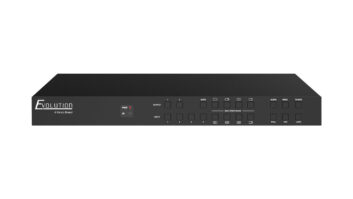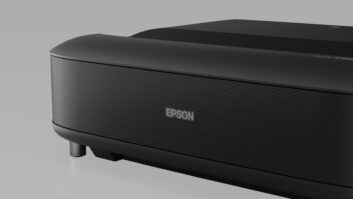TWICE: Where do you rank 4K Ultra HD video recording in importance to the consumer, and will we see this dominate as a feature in the same way that FullHD 1080 did?
Chris Chute, IDC: IDC believes 4K will proliferate much more quickly than HD did a decade ago. The CE industry realizes that 4K can be a success in ways 3D could not, which is why we are seeing accelerating price declines for UHD televisions, and 4K video capture being implemented in smartphones, and prosumer cameras and camcorders much more quickly than HD was. By the end of 2015 I suspect 4K will be a standard feature in high-end smartphones, and that by 2016 to 2017 there will be a critical mass of UHD set adoption, as well as 4K viewing and playback available on high-end tablets to make the capture of 4K content more usable.
Benjamin Arnold, The NPD Group: When you talk about 4K, you begin to talk about an ecosystem. We are pretty upbeat about the potential for 4K adoption in TVs, and as consumers find new ways to project their personal content on TV screens, I think 4K video recording becomes a much more compelling feature. I’d say it will have an even bigger impact than HD 1080; the trick is balancing resources against the current expectations for 4K adoption — if we suddenly see that 4K set sales are stalling, you don’t want to have an oversized investment in promoting 4K on the camera side.
Darin Pepple, Panasonic: We see this as an immediate opportunity through 4K photo capture from 4K Ultra HD video; again, we call this Hybrid Photography and it’s changing photography right now.
Jay Kelbley, Samsung: The paradigm of movie recording is always changing. UHD/4K is the next big thing milestone. Photographers and customers are realizing that UHD movies capture four times higher resolution than FullHD. Viewers can watch even more impressive, smoother and finer footage when viewing on a UHD TV or 4K projector. This is an important feature to consider in cameras going forward.
Masahiro Horie, Nikon: As 4K becomes more prevalent, including a more robust selection of devices for playback, Nikon will continue to evaluate the market for opportunities, including the consumer market as well as the professional video market.
Eliott Peck, Canon: While there have been announcements of relatively low-priced cameras that support 4K Ultra HD video recording, the average person cannot do much with this 4K output. It’s a negligible part of the overall consumer market but sometime down the road it will become more important.
Mark Weir, Sony: Consumer’s prioritization of 4K video recording is dependent primarily on their ownership of 4K TV, and/or their interest in capturing video for the future in which 4K will be prevalent. Most industry watchers accept the inevitability of 4K capture and viewing, so it’s very likely that consumer 4K adoption will develop even more quickly that FullHD 1080p.
Jim Malcolm, Ricoh Imaging: 4K adds a strong marketing message as well as value to any camera that has it. 1080 took a little time to catch on. 4K will do the same, but it will eventually dominate.
See More:
Imaging Industry Bowed But Undaunted
Holidays To Drive ILC, 4K, Super-Zoom Sales
Keys To Growth: Quality, Connectivity, Lifestyle (Only-Only Bonus Content!)
Camera & Smartphone Synergies Evolve (Online-Only Bonus Content!)













